Unclear Purpose Of Mysterious Rock-Cut City Of Petra – Was It A Fortress Or Sacred City?
A. Sutherland - AncientPages.com - Petra - was a "fairy city of pink sandstone", mysterious, legendary and lost to the western world, and erased from our memory for over a thousand years.
History has long been very silent in regard to the life, art, and religion of the Edomites, but slowly, archaeologists begin to unveil Petra's oldest secrets.

The region around Petra not only grew enough food to meet its own needs but also would have been able to provide olives, olive oil, grapes and wine for trade.
Since the time of Johann Ludvig Burckhardt, who rediscovered Petra in 1812, the purpose of the rock-cut city hidden away in a rather secret location, has baffled many scholars, archaeologists, and ordinary travelers.
What exactly was the function of this place? Was it a sacred city, a commercial center, or a fortress?
The ancient city of Petra - with more than 3,000 temples, tombs and thousands of caves carved out of sandstone rocks - was built at the foot of Jordan's Jebel al-Madhbah mountain, in the harsh desert of southern Jordan and situated in Mt. Seir, about 80 kilometers south of the Dead Sea and 2,775 feet above sea-level.
The city - built inside a gorge approximately 4000 feet (1200 m) long and up to 330 feet (100 m) deep - was first inhabited by a Semitic-speaking tribe of the Edomites, mentioned in the Bible as descendants of Esau, the father of the Edomites in the hill country of Seir.
After the Edomites fell, the Nabateans arrived and settled there in the third century BC and so, from the first century B.C. to the third century A.D., Petra was one of the most influential and prosperous commercial centers in antiquity.
The majority of the buildings were cut directly into the cliffs by the Nabatean builders or were at least brought into their fascinating form by them.
The recent discovery of terrace farming of wheat, grapes and possibly olives, resulted in a vast, green, agricultural “suburb” in an otherwise very inhospitable and arid landscape, is evidence into successful and extensive water management and agricultural production in and around Petra.
The Nabataeans, whose prosperous kingdom had its capital at Petra until the beginning of the second century, were skilled people, according to archaeologists continuously working in the area.
It has been suggested that extensive terrace farming and dam construction in the region north of the city began around the first century, some 2,000 years ago, not during the Iron Age (c. 1200-300 BC) as had been previously hypothesized.
Based on surface finds and comparative data collected by other researchers in the area, however, it is clear that this type of farming continued to some extent for many centuries, until the end of the first millennium (between A.D. 800 and 1000).
Dating the start of extensive terrace farming at Petra to the beginning of the common era has important historical implications, according to researcher Christian Cloke, a doctoral student at the University of Cincinnati, and one of the researchers involved in the Brown University Petra Archaeological Project (BUPAP).
Namely, this date coincides closely with the Roman annexation of the Nabataean Kingdom in A.D. 106.
The region around Petra produced food to meet its own needs and was able to trade olives, olive oil, grapes, and wine.
This robust agricultural production would have made the region a valuable asset for supplying Roman forces on the empire's eastern frontier."
See also:
Skilled Nabateans Celestially Aligned Petra's Wonderful Architecture
On large stretches of land north of Petra, inhabitants built complex and extensive systems to dam wadis (riverbeds) and redirect winter rainwater to hillside terraces used for farming. It was important for Petra’s inhabitants to capture and store all available water for later use during the dry season. Over the centuries, the Nabataeans of Petra became experts at doing so.
The Nabateans had considerable knowledge of their surrounding topography and climate and differentiated watersheds and the zones of use for water. These mysterious people also were skilled skywatchers, who made systematic and accurate observations. The proof of their astronomical achievements can be found in Petra's celestially aligned buildings.
Petra's water supply was of prime concern as the city was situated on the edge of the desert. The Nabateans - highly skilled hydraulic engineers developed sophisticated irrigation systems, dams, and water conservation.
In the year 106 AD the Nabateans were defeated by the Romans and Petra became part of the Roman Empire. After two devastating earthquakes in 363 AD and 551 AD, the inhabitants left the rock city.
Evidence from archaeological investigations over the years suggests that the strange city of Petra may have had many different functions over the hundreds of years it was inhabited and it's still much to investigate in this ancient place.
Written by – A. Sutherland - AncientPages.com Senior Staff Writer
Copyright © AncientPages.com All rights reserved. This material may not be published, broadcast, rewritten or redistributed in whole or part without the express written permission of AncientPages.com
More From Ancient Pages
-
 1,600-year-old Roman mosaics from ancient Serdica discovered in Sofia, Bulgaria
Artifacts | Aug 30, 2015
1,600-year-old Roman mosaics from ancient Serdica discovered in Sofia, Bulgaria
Artifacts | Aug 30, 2015 -
 Why Is Roulette Called The Devil’s Game?
Ancient History Facts | Apr 3, 2018
Why Is Roulette Called The Devil’s Game?
Ancient History Facts | Apr 3, 2018 -
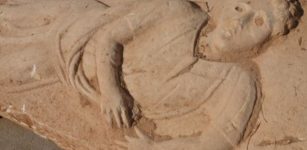 Unique 1,800-Year-Old Stone Sarcophagus Exposed In Ashkelon Building Site
Civilizations | Sep 6, 2015
Unique 1,800-Year-Old Stone Sarcophagus Exposed In Ashkelon Building Site
Civilizations | Sep 6, 2015 -
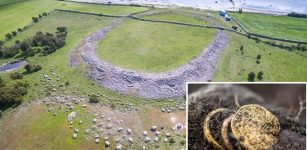 Gold Coins Shed Light On The Mystery Of Sandby Borg And Massacre On The Swedish Island
Archaeology | Oct 16, 2017
Gold Coins Shed Light On The Mystery Of Sandby Borg And Massacre On The Swedish Island
Archaeology | Oct 16, 2017 -
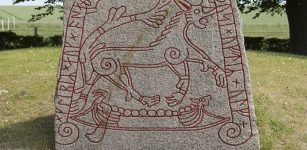 Naglfar Nail-Ship Carries Demonic Forces To Ragnarok In Norse Beliefs
Featured Stories | Aug 10, 2020
Naglfar Nail-Ship Carries Demonic Forces To Ragnarok In Norse Beliefs
Featured Stories | Aug 10, 2020 -
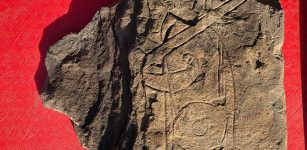 Remarkable Early Medieval ‘Govan Warrior’ Stone Discovered In Glasgow, Scotland
Archaeology | Sep 22, 2023
Remarkable Early Medieval ‘Govan Warrior’ Stone Discovered In Glasgow, Scotland
Archaeology | Sep 22, 2023 -
 Grave Of Amazon Warrior Who Lived In The Kingdom Of Urartu Discovered In Armenia
Archaeology | Nov 28, 2019
Grave Of Amazon Warrior Who Lived In The Kingdom Of Urartu Discovered In Armenia
Archaeology | Nov 28, 2019 -
 Can Peptide Droplets Explain The Emergence Of The First Living Organisms On Earth?
Archaeology | Oct 20, 2021
Can Peptide Droplets Explain The Emergence Of The First Living Organisms On Earth?
Archaeology | Oct 20, 2021 -
 Young Boy Finds A Huge Tooth From A Prehistoric Shark In South Carolina
Archaeology | Sep 3, 2022
Young Boy Finds A Huge Tooth From A Prehistoric Shark In South Carolina
Archaeology | Sep 3, 2022 -
 Mystery In The Stones: Rujm El-Hiri (Wheel Of Ghosts) Was Not An Ancient Observatory – So Why Was It Built? – New Study
Archaeology | Jan 2, 2025
Mystery In The Stones: Rujm El-Hiri (Wheel Of Ghosts) Was Not An Ancient Observatory – So Why Was It Built? – New Study
Archaeology | Jan 2, 2025 -
 Unusual Discovery Of A Bronze Age Axe In Norway – Is An Unknown 3,000-Year-Old Shipwreck Nearby?
Archaeology | Jul 19, 2024
Unusual Discovery Of A Bronze Age Axe In Norway – Is An Unknown 3,000-Year-Old Shipwreck Nearby?
Archaeology | Jul 19, 2024 -
 The Gold Compartment At Habu Temple Looks Magnificent After Restoration
Archaeology | Aug 20, 2022
The Gold Compartment At Habu Temple Looks Magnificent After Restoration
Archaeology | Aug 20, 2022 -
 Ancient DNA’s Analysis Delivers Crucial Clues To Migratory Patterns During The First Millennium AD
DNA | Jan 2, 2025
Ancient DNA’s Analysis Delivers Crucial Clues To Migratory Patterns During The First Millennium AD
DNA | Jan 2, 2025 -
 Neanderthals Of The Mediterranean Areas Became Extinct But Not Because Of Climate
Archaeology | Jul 20, 2020
Neanderthals Of The Mediterranean Areas Became Extinct But Not Because Of Climate
Archaeology | Jul 20, 2020 -
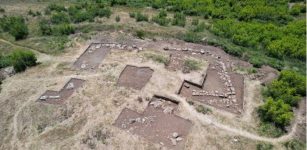 2,000-Year-Old Lost City Of Bassania Described By Roman Historian Livy Investigated By Archaeologists
Archaeology | Jun 21, 2022
2,000-Year-Old Lost City Of Bassania Described By Roman Historian Livy Investigated By Archaeologists
Archaeology | Jun 21, 2022 -
 Mysterious And Abnormally Large Burials Found Near The Black Fortress In Armenia – Who Was Buried There?
Featured Stories | Jan 2, 2025
Mysterious And Abnormally Large Burials Found Near The Black Fortress In Armenia – Who Was Buried There?
Featured Stories | Jan 2, 2025 -
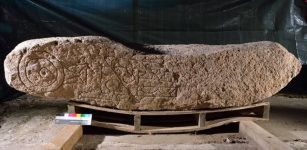 Dandaleith Stone: Scotland’s Rare Symbol Stone Of The Picts – Will It Be Deciphered Now?
Ancient Symbols | Jan 21, 2016
Dandaleith Stone: Scotland’s Rare Symbol Stone Of The Picts – Will It Be Deciphered Now?
Ancient Symbols | Jan 21, 2016 -
 DNA Reveals The History Of Modern And Archaic Humans Is Much Longer And More Complicated Than Previously Thought
DNA | Jan 2, 2025
DNA Reveals The History Of Modern And Archaic Humans Is Much Longer And More Complicated Than Previously Thought
DNA | Jan 2, 2025 -
 Apollo – Loved And Feared Greek God Of Divination And Prophecy Who Was Also Seer Of Zeus
Featured Stories | Feb 6, 2019
Apollo – Loved And Feared Greek God Of Divination And Prophecy Who Was Also Seer Of Zeus
Featured Stories | Feb 6, 2019 -
 City Of Ephesus And Celsus Library With More Than 12,000 Scrolls
Featured Stories | Sep 17, 2015
City Of Ephesus And Celsus Library With More Than 12,000 Scrolls
Featured Stories | Sep 17, 2015





